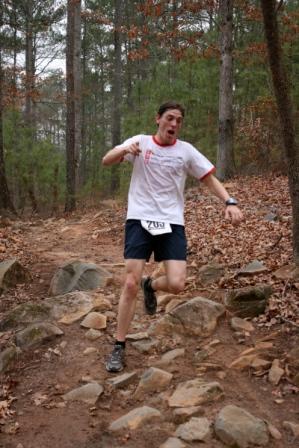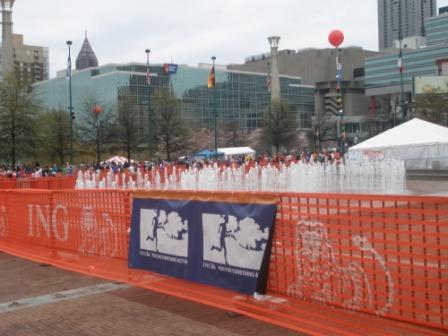How I Became A Serious Runner
Tuesday, March 31st, 2009
This is a post from my friend Tim Hatton who was inspired by this blog to begin running. I’ve always said, ‘if we inspire at least one person to start running, then we’ve succeeded.’ I guess I can go home now. From Hatton:
I am the first to admit that my first perception of running was “it’s boring” and “painful”. My approach to running was something like this: I have not run in a while let’s test how far I can go, as fast as I can go. After that distance is determined I’ll just try to go as hard and go a farther distance. So having done little to no running (or activity for that matter) I went out determined to run as fast a mile I could. The results: a 7 minute mile with a dash of right knee and shin pain, but overall decent results, I thought. Having gone basically to the end of the street and back in a flash, I felt active again. I told most of the people I saw over the next few days about how I was going to be running more often, change my lazy ways. I think we have all reached that point of feeling fat, dumb, and lazy – it is no way to go through life.
The reality: I went running maybe two to three more times before my knee started to seriously hurt and I called it quits. I just wasn’t cut out for running, I justified to myself and others that I had impress just weeks early with my new found (renewed) motivation. The sports I have been into – lacrosse and hockey (yes, just hockey, when you grow up in Connecticut you don’t have to call it ice hockey) – just hadn’t prepared my body for running longer distances consistently. And that is where I put running in my mind – maybe not so much as boring anymore as I enjoyed getting to know the neighborhood a little closer, at a slower speed than driving (more about that later) BUT definitely still painful.
Enter Amanda. Amanda is my cute, little girlfriend, who runs. And she runs quite well. She is capable of maintaining her speediness over long distances, quite impressive (3:52:12 Chicago Marathon). Distances in my mind never achievable for me because of my knee problems, probably the result of a slash I took during the Tennessee game my senior year at Georgia playing lacrosse, which sidelined me for the second half despite my self-medicating 5 Advil. Anyhow, back to how Amanda fits in. She was a cross country runner in high school and college and explains to me the pain I am experiencing is because I am not building up properly. What? In hockey and lacrosse you just sprint as fast as you can for short spurts, then as you feel needles in your lungs you go to the bench for subs. And while I did get shin splints during pre-season training they eventually subsided as we played more games and quit with the stupid two-mile lake runs, around UGA rec field.
Getting back to the build-up. The reason, she explained, was that I was going to hard, stressing muscles and joints that had not been properly trained. She explained it like this – if you want to bench press 250 pounds (pounds, baby! – Jerky Boys) you do not get on the bench and man up 250 lbs on your first, gym head-turning grunt, you build up slowly. First, try 150 ten times (pantzy) and then slowly add weight. Ok, that makes sense. Go slow, build up, slowly add more weight, ah, distance to your routine.
So I started to try that. I ran two miles, a couple of times the first week. Then I ran 3 miles the second and third, and completed a 5k in 24:36. A few months later of consistently adding miles and soon I will be running a 10K with a goal of 45 minutes.










 Everyone has fallen or will eventually fall when running. Sorry, but it’s just math. All you can do is try to minimize the occurrences and mitigate the severity of the impact. Most of the time falls result in skinned knees or elbows but falls while running can be worse, like a sprained ankle or a broken wrist. Not to mention a busted ego. Sometimes that takes the longest to heal. It’s better than a busted face though. See. Way to stay positive.
Everyone has fallen or will eventually fall when running. Sorry, but it’s just math. All you can do is try to minimize the occurrences and mitigate the severity of the impact. Most of the time falls result in skinned knees or elbows but falls while running can be worse, like a sprained ankle or a broken wrist. Not to mention a busted ego. Sometimes that takes the longest to heal. It’s better than a busted face though. See. Way to stay positive.